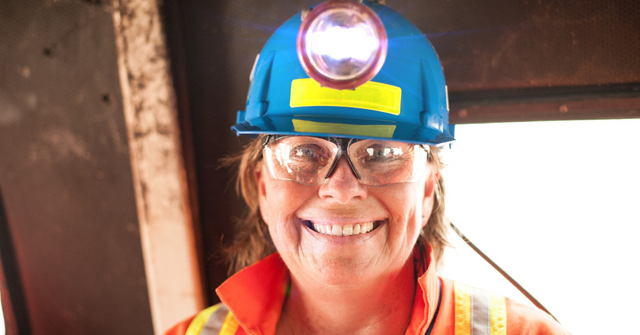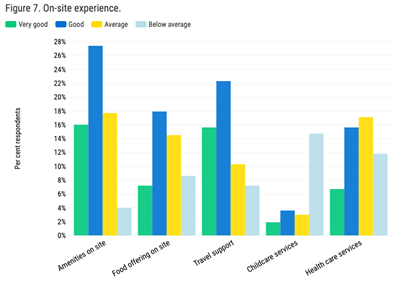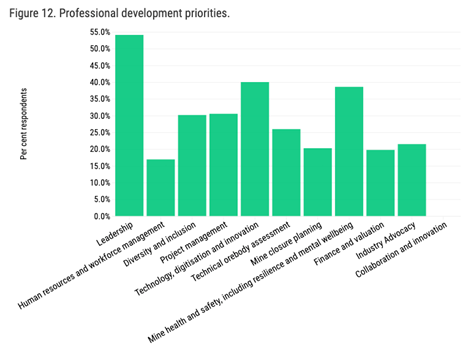
How do we encourage more women into the mining industry and then support them to stay? AusIMM’s annual Women in Mining Report has some suggestions.
How do we encourage more women into the mining industry and then support them to stay?
AusIMM’s annual Women in Mining Survey has just been released and, as always, the findings are instructive. More than 500 women employed in the mining industry took part in this year’s survey.
Overall, the news on women’s participation is positive. Many of what we might consider “the right numbers” have moved in the right direction compared to previous years’ results. More than two-thirds of women, for example, now rate amenities onsite as good or very good — up 7.5% on 2020. And many respondents said their workplaces felt more inclusive and diverse, and that the onsite experience was improving.
But, as always, there is room to do more. Here are six areas where the findings of the AusIMM report indicated more could be done to encourage women’s participation in mining.
1. Improve mid-career opportunities
This is actually one area that is showing signs of improvement, with an uptick this year in the number of women who have been in the industry for five to 10 years (21%, up 5% on previous years).
In previous years most respondents have either been in the industry less than five years or more than 10. This suggests that while the industry is reasonably inclusive of early-career women in junior and intermediate roles, there’s a bottleneck mid-career, preventing women progressing to middle and senior positions.
While this year’s survey might indicate some easing of that bottleneck, it’s vital that as an industry we work to remove barriers to women progressing through to more senior positions, including onsite.
2. Support more technical opportunities through experience
For many technical professional roles in mining, gaining onsite experience in operations, maintenance, management and various other functions is an important career step.
Women hold 19.2% of FIFO and DIDO roles and 15% to 20% of all onsite roles. Supporting them in these roles — and ensuring they have opportunities to gain technical experience and knowledge — is critical to seeing more women advance to senior and leadership positions.
3. Invest in improvements to conditions, amenities
While the AusIMM survey this year found a big improvement in the reported satisfaction of women in mining with working conditions (like onsite amenities, food and travel support), there is still work to do.
Satisfaction with healthcare services, as the chart below shows, is still very low. Respondents emphasised the need for more support for women’s health and wellbeing, and mental health.
The report found women don’t find the onsite environment particularly inclusive. And there was a strong message from respondents that sites need more recreational options beyond the gym and mess hall, and improved internet access.

4. Offer flexibility and better options around childcare
Access to childcare for women working in onsite roles in resources continues to be a major stumbling block. Three-and-a-half times as many women working FIFO or DIDO described their childcare options as “below average” compared to “good” or “very good”.
AusIMM’s report concludes that “measures to increase operational flexibility and support female professionals to balance onsite and off-site commitments is critical to drive retention and sustained career progression”.
5. Demonstrate equal respect and value in the workplace
Only 37% of women working in FIFO and DIDO roles felt their work was valued equally to that of their male counterparts. That’s 10% lower than for women across all areas of the industry.
Only 47% believe their work is valued for its quality (without reference to gender) and just 40% believe pay is equitable between the sexes. Clearly, there is work to be done here.
6. Create leadership and professional development pathways
To get more women to the top of our companies and our industry, we need to ensure they have opportunities to develop and realise their potential.
Leadership is the top professional development priority for women in mining, by far. The preferred modes of professional development are attending conferences, face-to-face engagement and online reading. The report also found exceptionally high demand for mentoring and coaching.

A final word on the Women in Mining Survey 2021
None of this is to suggest mining is an unwelcoming industry for women. There has been incredible progress made over recent decades, and opportunities for women are continually improving.
As AusIMM CEO Stephen Durkin explained: “It’s encouraging to see the industry making some progress in key areas, but there remains work to be done, particularly in the areas of workforce flexibility and perceptions around the inclusiveness of the entire sector.”
Encouraging that improvement of opportunity is exactly why AusIMM carries out its survey each year. It’s a way to measure that progress and to shine a light on areas that still need attention. It should be an annual must-read for everyone in leadership in the industry.
Be the first to know about new job postings when you register for job alerts. We’ll send you an email when the role you want becomes available.